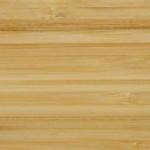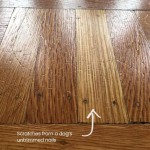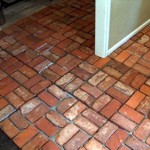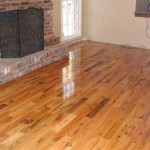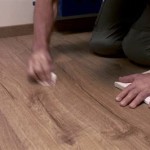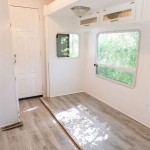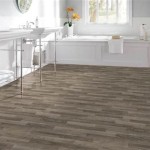Hardwood Flooring: Installing in a Diagonal Direction
Hardwood flooring is a timeless and elegant choice for any homeowner seeking to enhance the beauty and value of their property. While traditional parallel installation is the most common method, installing hardwood flooring diagonally offers a unique and visually striking aesthetic. This approach allows you to transform the appearance of a room, making it appear larger and more dynamic while adding a touch of sophistication. This article will explore the intricacies of installing hardwood flooring diagonally, highlighting its advantages, potential challenges, and essential considerations for a successful project.
Enhanced Visual Appeal: Transforming the Perception of Space
Installing hardwood flooring diagonally creates a visually captivating effect that can dramatically alter the perception of a room's dimensions. The diagonal pattern breaks up the monotony of straight lines, drawing the eye across the floor and making the space appear larger and more expansive. This is particularly beneficial for smaller rooms, where the illusion of added space can significantly enhance the overall feel. Additionally, the diagonal pattern can add a sense of movement and dynamism, creating a more engaging and welcoming atmosphere.
The diagonal layout also provides a unique opportunity to play with the direction of the wood grain. When installed parallel, the wood grain flows consistently in one direction. However, with a diagonal installation, the grain can be arranged to create a more intricate and visually interesting pattern. This can be particularly effective when using wood planks with distinctive grain patterns or when incorporating different wood species.
Technical Considerations: Planning and Execution
Installing hardwood flooring diagonally requires careful planning and execution to ensure a professional and aesthetically pleasing result. Unlike traditional parallel installation, where the planks are simply laid out in straight lines, diagonal installation involves a more intricate process. It is essential to ensure that the subfloor is level and properly prepared to accommodate the angled installation. Any unevenness or imperfections in the subfloor will be amplified by the diagonal pattern, making it crucial to address these issues before proceeding with the installation.
Accurately measuring and cutting the planks to fit the diagonal pattern is also a critical aspect of the installation. This process requires precision and patience to ensure that the planks align perfectly and create a seamless flow. The use of specialized tools like miter saws and angle finders can significantly aid in achieving precise cuts. When cutting planks, it is essential to maintain consistency in the angles to ensure that the pattern is uniform throughout the room. This can be challenging, especially in rooms with irregular shapes or corners.
Added Complexity and Potential Challenges
While diagonal installation offers a distinct aesthetic advantage, it also presents some added complexity and potential challenges compared to traditional parallel installation. One of the primary considerations is the increased amount of waste generated during the cutting process. The diagonal pattern often requires cutting planks at angles, resulting in more discarded material. This can be a significant concern, particularly when using high-quality or expensive hardwood species.
Another potential challenge is the increased difficulty in cutting and fitting planks around obstacles such as doors, windows, and other architectural features. The diagonal pattern requires more precise measurements and intricate cutting techniques to ensure that the planks fit seamlessly around these obstacles. This process often requires the expertise of a skilled flooring installer to ensure the desired outcome. The increased complexity also translates to a longer installation time and potentially higher labor costs.

Hardwood Flooring Layout Which Direction Diagonal

Hardwood Flooring Layout Which Direction Diagonal

Diagonal Multi Directional Flooring

Stunning Hardwood Floors Benefits Of The Top 3 Diagonal Patterns

Which Direction Should You Lay Hardwood Floors 50floor

The Best Direction To Lay Hardwood Flooring Elite

Diagonal Pattern For Hardwood Kimchi

Diagonal Multi Directional Flooring

Diagonal Wood Planks Floor Design House Flooring

Hardwood Flooring Layout Which Direction Diagonal
Related Posts

